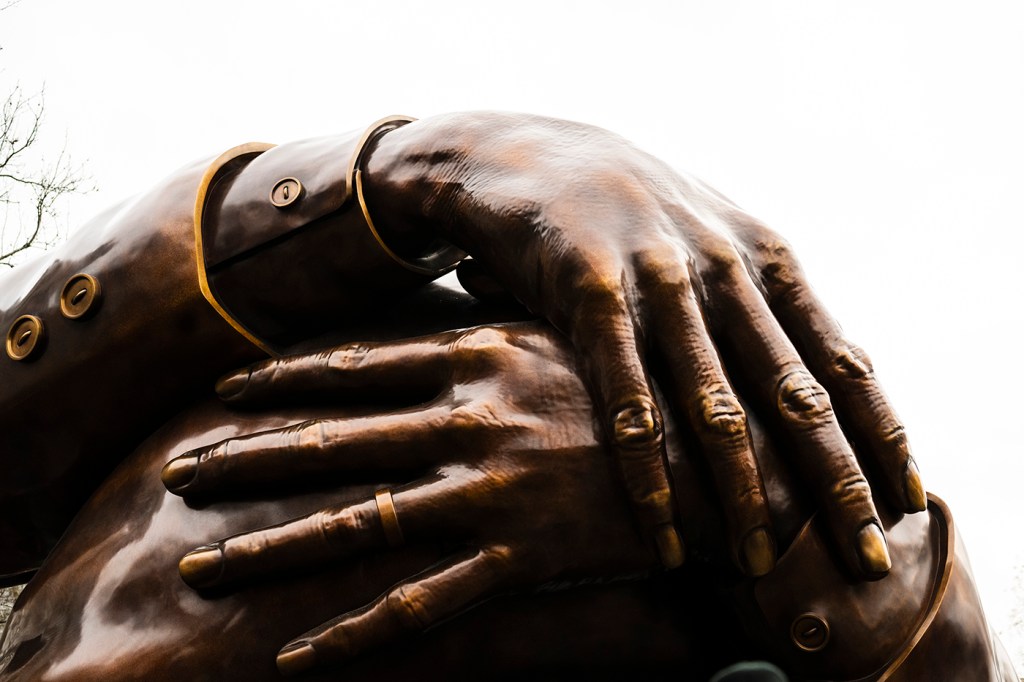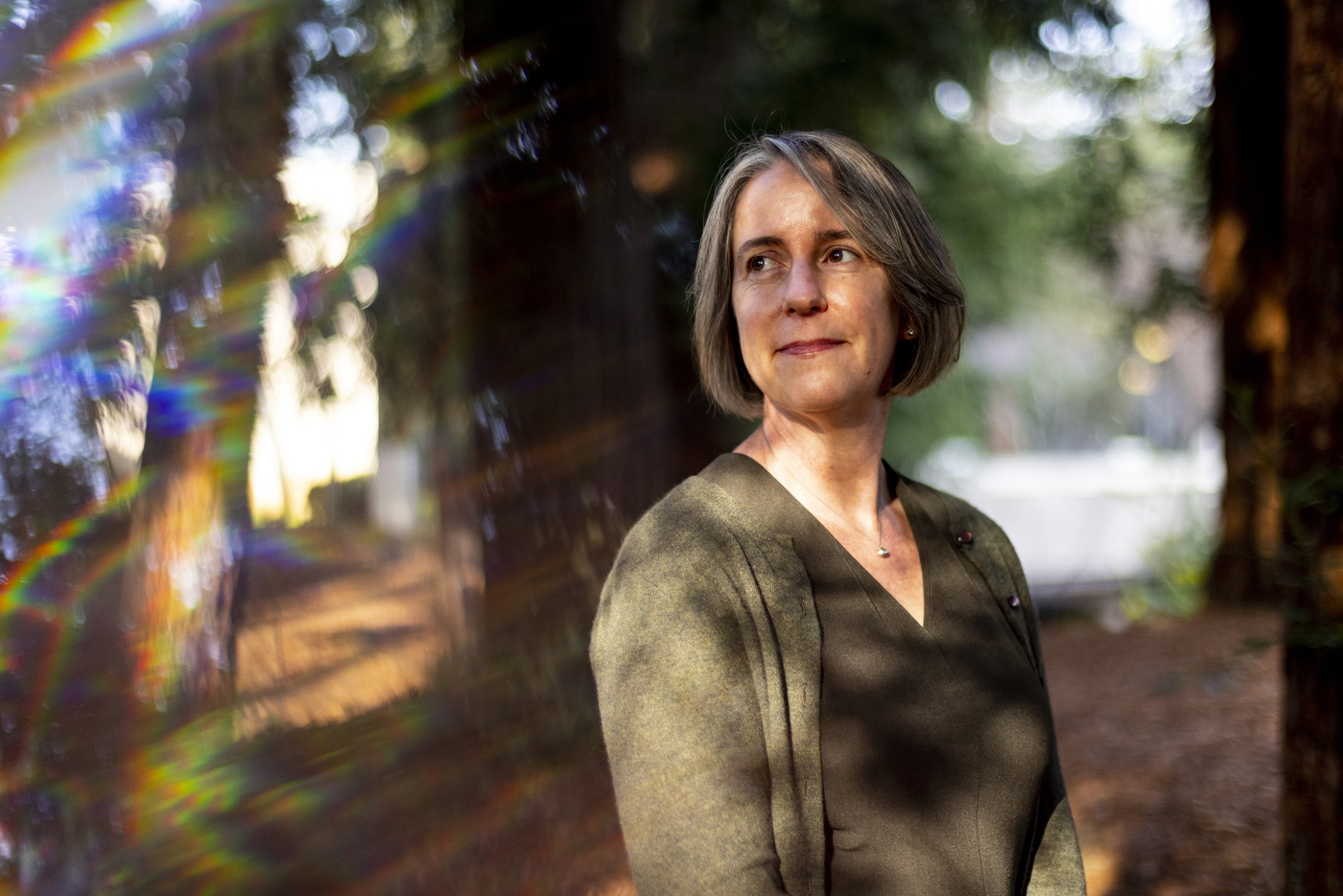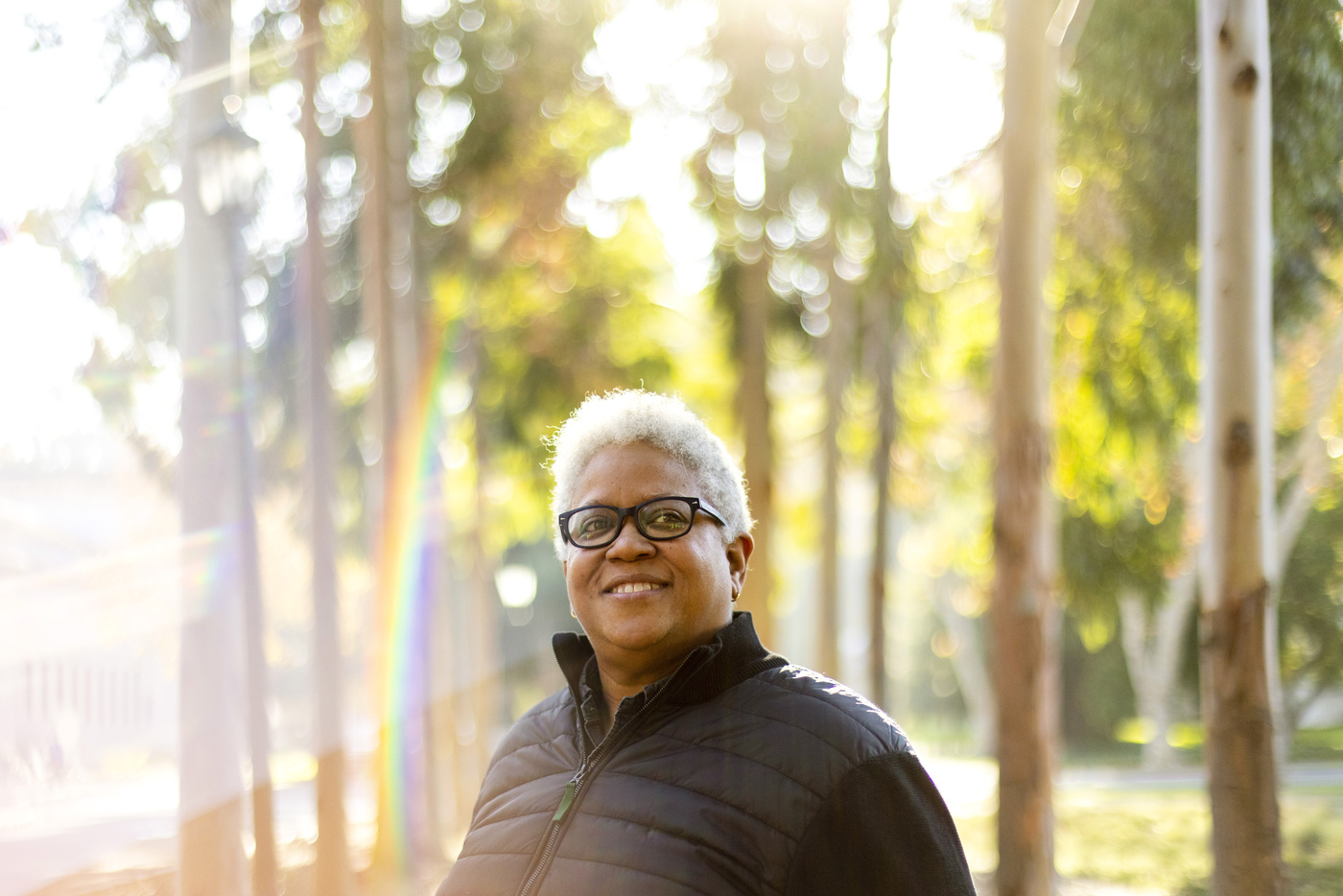‘When I look at it, I see love.’ MLK Memorial ‘The Embrace’ on Boston Common elicits warmth, artistic criticism

On a recent Sunday afternoon the site of “The Embrace”—a new memorial to Martin Luther King Jr. and his wife Coretta Scott King in Boston—was buzzing with people.
Adults and children alike were inspecting the 20-foot-tall by 25-foot-wide sculpture, feeling its smooth bronze, walking under the monument and taking photos in front of it.
Some were taking in the space, sitting on stone benches that surround the new circular 1965 Freedom Plaza placed in the heart of Boston—Boston Common. Others focused their eyes on the ground that displayed the names of local leaders of Greater Boston who worked for civil rights and social justice from the 1950s through 1970s.
Every now and then people would stop in front of the semicircular wall that hugs the plaza to read a quote attributed to Scott and pause at a couple of photos, dried bouquets of flowers and a skateboard deck that constituted a makeshift memorial for Tyre Nichols, a young Black man killed by police in Memphis on Jan. 27.
Nothing in the atmosphere at the plaza reminded of the debate and the barrage of criticism the statue came under on TV, in news publications and on social media as soon as it had been revealed on Jan.13.

“I love it. Absolutely love it,” Faye Johnson, a senior from Malden, Massachusetts, told Northeastern Global News. “When you see it on TV, you don’t really get that feel, you know, even though it’s explained. But when you see it, you actually get warm.”
Johnson came to see the memorial with her friend Vanessa Victor, who grew up in Boston but moved to Charlotte, North Carolina, later in life.
“When I look at it, I see love. I see compassion. I see empathy. I see what the world needs now,” Victor says. “I see the understanding that we need to be more human and we need to embrace the human side of who we are as people.”
Isaiah Walters, 26, of Boston, and Taylor Rose, 24, of Boston, were walking through Boston Common when they decided to check out the monument that they had seen on social media.
Walters says he would have preferred to see a face of King or Scott, but he could also see what the artist “was trying to do,” and relate to the piece.
“It doesn’t matter what person you are, if you come together and can support each other, lift each other up,” he says.
Rose says the monument was “nice” but she felt it looked like “hands all over the place” from some angles. It would have been helpful, she says, if there was more information about the statue displayed somewhere at the memorial.
“I’m actually more interested in the names that are on the ground,” she says. “Because you don’t really hear much or you’re not exposed to [information about them] in the news and media. You can come and see how many people of color are politically involved in activism and other things.”
One of the roles of art is to open up conversations, says Stephanie Hanor, director of Mills College at Northeastern Art Museum in Oakland, California.
“As long as it is out there in a public space, it is meant to be judged by all of us,” she says.
Art historians need to figure out how to give people the tools to find more information and context that will help them understand the piece deeper, Hanor says.
It is also important to understand the significance of the location of “The Embrace,” she says. King met Scott in Boston while pursuing a doctoral degree in theology from Boston University. In 1965, King led 20,000 people from Roxbury, a predominantly Black neighborhood in Boston, to Boston Common in one of the first civil rights marches in the Northeast.
“I feel like the artist was brave and bold, and I think that creating work that challenges people also is really interesting and important,” says Ajuan Mance, professor at Mills College at Northeastern University, artist, illustrator and writer.

People had some preconceived idea what the monument was going to look like, Mance says, so they were taken by surprise that an image of King and Scott in the traditional sense was not there.
“What we’re seeing is the experience now,” she says. “But its larger meaning and how people will interact [with the monument] that stands to be seen.”
Subsequent generations, people who will be coming of age with this statue as a part of their community, Mance says, might feel different about it.
Monuments like this are of critical importance, particularly to African American communities, she says, as they affirm people that the city sees them, and their history, legacy, heroes and words are worth commemorating.
“As people who all the time look at newspapers, television shows, listen to the words of politicians and hear people describe, depict, engage in Blackness in ways that don’t feel like people celebrate and understand the beauty and the power of your community,” Mance says. “To walk into a town square or a park and see that someone sees you in the way that you see yourself, that what you know to be true about your community is reflected in a city’s public art is a very powerful experience.”
Monuments represent a statement about power and power dynamics, Hanor says, depending on who is chosen to be memorialized and how. Whether it is a monument supported publicly or privately through a government institution, a civic organization, a museum or a university, there is always an agenda behind it, she says.
There is an ongoing debate around monuments that the modern United States has inherited.
“There is a consensus right now that the Confederate monuments need to be removed,” Hanor says. “But there is no real agreement on what a monument to Black history and to Black historical figures should look like.”
There are many historical events, heroes of African American history and tragedies that are only now coming to light, Mance says.
She sees a particular value in the usability of memorials, like Maya Lin’s Vietnam War Memorial in Washington, D.C., whether they can become a place for people to mourn, celebrate or remember something.
“Bostonians will find the meaning in this piece, I think, particularly the Black community,” Mance says.
She would like people to come to the monument on special occasions, leave King’s quotes or reflect about the memorial on whiteboards.
“Putting the art out there is the first step, then the community making it their own, is the second step,” she says.
Alena Kuzub is a Northeastern Global News reporter. Email her at a.kuzub@northeastern.edu. Follow her on Twitter @AlenaKuzub.





